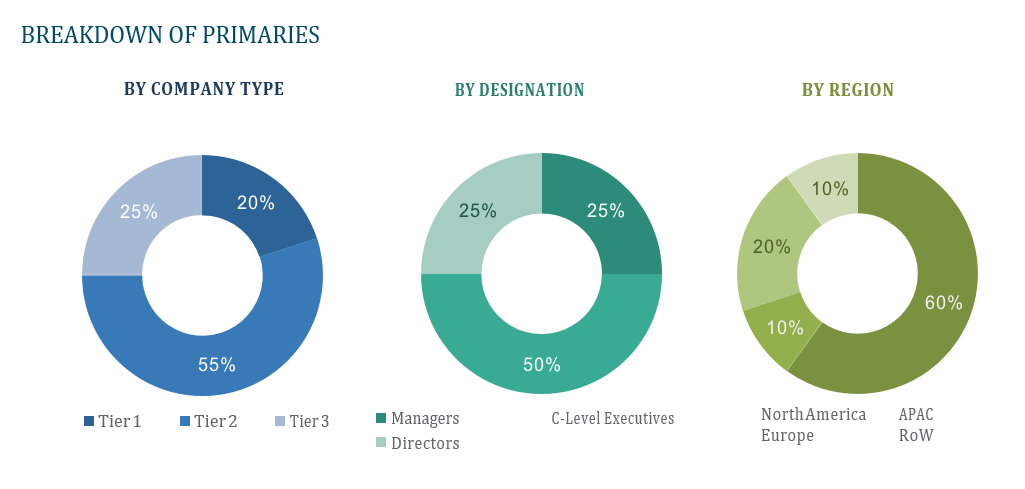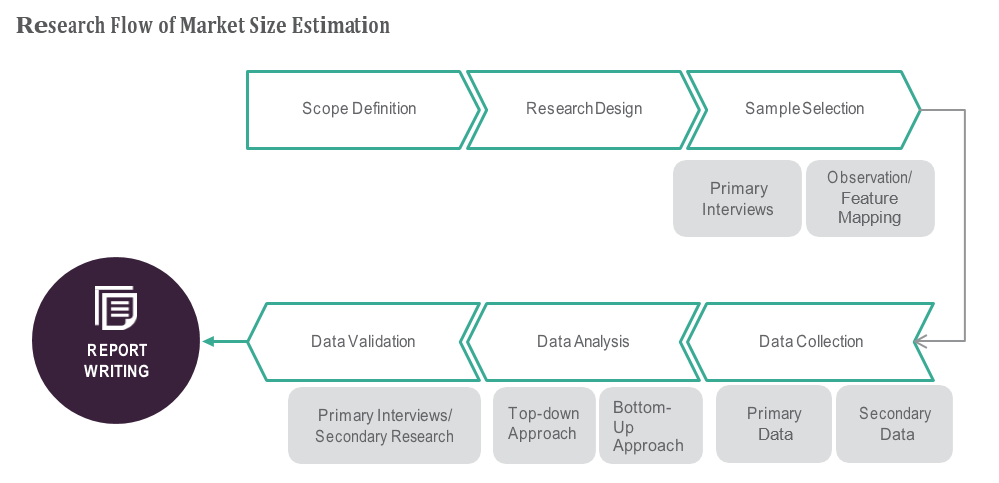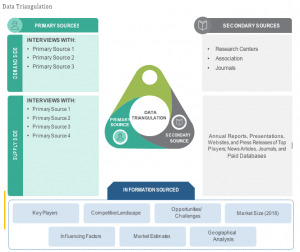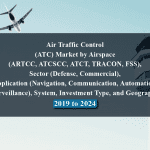OVERVIEW
The LEO Terminals Market is currently valued at USD 6 billion in 2024 and will be growing at a CAGR of 23.3% over the forecast period to reach an estimated USD 17.7 billion in revenue in 2029. The LEO (Low Earth Orbit) terminals market is experiencing rapid growth and innovation, driven by advancements in satellite technology and increasing demand for high-speed internet connectivity worldwide. LEO terminals are ground-based stations that communicate with satellites orbiting closer to the Earth’s surface, enabling faster data transfer rates and lower latency compared to traditional geostationary satellites. These terminals play a crucial role in various sectors, including telecommunications, maritime, aviation, and remote sensing. With the emergence of mega-constellations comprising thousands of small satellites, companies are developing compact and cost-effective LEO terminals to cater to a broader customer base. Additionally, ongoing efforts to bridge the digital divide in underserved regions are fueling the adoption of LEO terminals for delivering broadband internet access to remote and rural areas. As the LEO satellite ecosystem continues to evolve, the market for terminals is expected to witness robust expansion, offering enhanced connectivity solutions for diverse applications globally.
One of the primary drivers propelling the growth of the LEO terminals market is the escalating demand for ubiquitous and high-speed internet connectivity across various industries and geographic regions. As the digital transformation continues to accelerate, businesses and consumers alike are increasingly reliant on seamless internet access for communication, commerce, entertainment, and data exchange. LEO terminals offer a promising solution by leveraging the advantages of low Earth orbit satellites, including reduced latency and increased bandwidth capacity, to deliver faster and more reliable connectivity compared to traditional satellite systems. Moreover, initiatives aimed at expanding broadband access to underserved and remote areas are further driving the adoption of LEO terminals, as they enable cost-effective deployment of internet infrastructure in regions lacking terrestrial infrastructure. As a result, the market for LEO terminals is poised for significant growth as organizations and governments prioritize bridging the digital divide and extending connectivity to unserved populations around the globe.
Table of Content
Market Dynamics
Drivers:
One of the primary drivers propelling the growth of the LEO terminals market is the escalating demand for ubiquitous and high-speed internet connectivity across various industries and geographic regions. As the digital transformation continues to accelerate, businesses and consumers alike are increasingly reliant on seamless internet access for communication, commerce, entertainment, and data exchange. LEO terminals offer a promising solution by leveraging the advantages of low Earth orbit satellites, including reduced latency and increased bandwidth capacity, to deliver faster and more reliable connectivity compared to traditional satellite systems. Moreover, initiatives aimed at expanding broadband access to underserved and remote areas are further driving the adoption of LEO terminals, as they enable cost-effective deployment of internet infrastructure in regions lacking terrestrial infrastructure. As a result, the market for LEO terminals is poised for significant growth as organizations and governments prioritize bridging the digital divide and extending connectivity to unserved populations around the globe.
Key Offerings:
In the competitive landscape of the LEO terminals market, key offerings encompass a range of innovative solutions tailored to meet the diverse needs of customers across various industries. These offerings typically include advanced terminal hardware equipped with cutting-edge antenna technology, signal processing capabilities, and robust connectivity features optimized for low Earth orbit satellite communication. Additionally, leading providers often offer comprehensive software solutions and management platforms designed to enhance the performance, reliability, and security of LEO terminal deployments. Key offerings may also encompass value-added services such as network management, remote monitoring and diagnostics, and customer support to ensure seamless operation and maximize user satisfaction. Furthermore, customization options, scalability, and interoperability with existing infrastructure are essential factors driving the adoption of LEO terminal offerings, enabling businesses and organizations to deploy tailored solutions that address their specific connectivity requirements and operational objectives effectively.
Restraints :
Although the LEO terminals industry has bright future potential, there are a number of obstacles that could prevent it from growing and being adopted. The complicated regulatory framework that oversees satellite communications, which includes spectrum allotment, licencing procedures, and international agreements, is one major barrier. Market participants may face difficulties adhering to these restrictions, which could cause delays in product development, launch, and market entry. Furthermore, adoption is hampered by the high upfront costs of LEO terminal hardware and infrastructure implementation, especially for small and medium-sized businesses and organisations in developing nations. Concerns about data privacy and cybersecurity also provide a barrier, since the growth of networks and connected devices raises the possibility of cyberattacks and vulnerabilities. Strong security measures and continuing investments in cybersecurity protocols and technologies are needed to address these problems. Moreover, the commercial expansion of LEO terminals may be constrained by competition from alternative connection options including high-altitude platforms and terrestrial broadband networks, particularly in heavily populated urban regions with well-established terrestrial infrastructure. In order to overcome these limitations, industry players must work closely together, make investments in security and regulatory compliance, and highlight the benefits of LEO terminals in providing dependable, fast connection to a range of markets and applications.
Regional Information:
• In North America, the LEO terminals market is characterized by strong demand driven by the region’s advanced telecommunications infrastructure and growing emphasis on expanding broadband access to underserved rural areas. Key players in the region are leveraging partnerships and strategic collaborations to deploy LEO terminal solutions for diverse applications, including consumer broadband, enterprise connectivity, and government services. Meanwhile, in Europe, regulatory initiatives aimed at promoting satellite communications and bridging the digital divide are driving market growth.
• European countries are actively investing in LEO terminal deployments to extend broadband coverage to remote regions and improve connectivity for maritime and aviation industries.
• In the Asia-Pacific region, rapid urbanization and increasing internet penetration are fueling demand for LEO terminals, particularly in emerging economies such as India and China. Government initiatives to enhance digital infrastructure and support satellite communication technologies are creating opportunities for market expansion.
Recent Developments:
• In August 2023, Hughes Network Systems, an EchoStar company, has secured a five-year Indefinite Delivery Indefinite Quantity (IDIQ) contract with the US Space Force. This contract allows the US Department of Defense, federal agencies, and international coalition partners to access Hughes’ fully managed, low-latency LEO satellite-based services.
• In July 2023 , L3Harris Technologies is set to finalize its USD 4.7 billion acquisition of Aerojet Rocketdyne following clearance from the US Federal Trade Commission. The purchase, aimed at bolstering L3Harris’s presence in the defense contracting sector, had faced scrutiny from some lawmakers concerned about competition and innovation.
Key Market Players:
SpaceX, OneWeb, Telesat, Amazon (Project Kuiper), SES, Hughes Network Systems, Viasat, Iridium Communications, Kymeta Corporation, and Intellian Technologies.
Frequently Asked Questions
1) What is the projected market value of the LEO Terminals Market ?
– The LEO Terminals Market is expected to reach an estimated value of USD 17.7 billion in revenue by 2029.
2) What is the estimated CAGR of the LEO Terminals Market over the 2024 to 2029 forecast period?
– The CAGR is estimated to be 23.3% for the LEO Terminals Market over the 2024 to 2029.
3) Who are the key players in the LEO Terminals Market ?
– SpaceX, OneWeb, Telesat, Amazon (Project Kuiper), SES, Hughes Network Systems, Viasat, Iridium Communications, Kymeta Corporation, and Intellian Technologies.
4) What are the drivers for the LEO Terminals Market ?
– The LEO terminals market is growing due to the increasing demand for high-speed internet connectivity across industries and regions. LEO terminals offer reduced latency and increased bandwidth capacity, compared to traditional satellite systems. Initiatives to expand broadband access to underserved areas are also driving their adoption, paving the way for significant growth.
5) What are the restraints and challenges in the LEO Terminals Market ?
– The LEO terminals market faces challenges due to complex regulatory environments, high upfront costs, cybersecurity concerns, and competition from alternative connectivity solutions. Compliance with regulations can delay product development and adoption, while high upfront costs can be a barrier for small and medium-sized enterprises. Investing in cybersecurity and demonstrating the value proposition of LEO terminals can help overcome these restraints and promote growth in the market.
6) What are the key applications and offerings of the LEO Terminals Market ?
– The LEO terminals market offers innovative solutions, including advanced hardware, software, and value-added services. These solutions cater to diverse industries and include advanced antenna technology, signal processing, and robust connectivity features. Customization options, scalability, and interoperability with existing infrastructure drive adoption, allowing businesses to effectively address their specific connectivity requirements.
7) Which region is expected to drive the market for the forecast period?
– North America is expected to have the highest market growth from 2024 to 2029
Why Choose Us?
Insights into Market Trends: Global Market Studies reports provide valuable insights into market trends, including market size, segmentation, growth drivers, and market dynamics. This information helps clients make strategic decisions, such as product development, market positioning, and marketing strategies.
Competitor Analysis: Our reports provide detailed information about competitors, including their market share, product offerings, pricing, and competitive strategies. This data can be used to inform competitive strategies and to identify opportunities for growth and expansion.
Industry Forecasts: Our reports provide industry forecasts, which will inform your business strategies, such as investment decisions, production planning, and workforce planning. These forecasts can help you to prepare for future trends and to take advantage of growth opportunities.
Access to Industry Experts: Our solutions include contributions from industry experts, including analysts, consultants, and subject matter experts. This access to expert insights can be valuable for you to understand the market.
Time and Cost Savings: Our team at Global Market Studies can save you time and reduce the cost of conducting market research by providing comprehensive and up-to-date information in a single report, avoiding the need for additional market research efforts.












